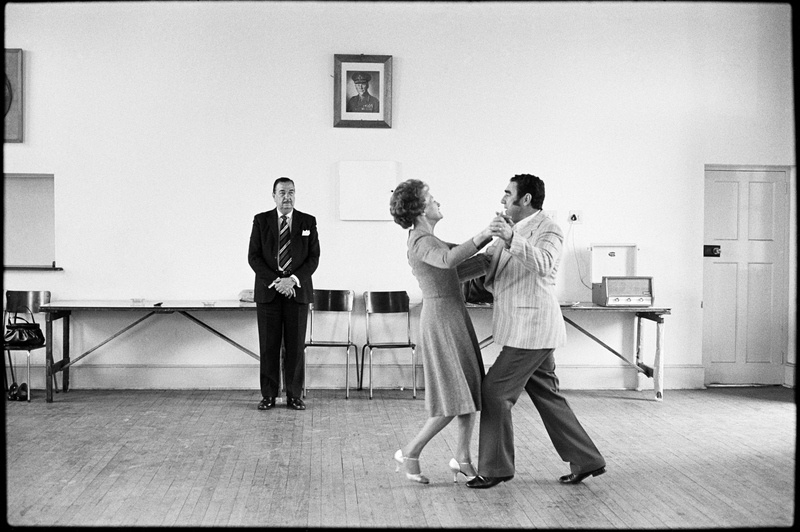David Goldblatt

In 1979, Goldblatt began working on a series of images taken in the white suburb of Boksburg. The photographs documented the everyday lives of its residents – a daughter practising the piano, a man mowing his lawn, weddings at the local church, a town meeting – what Goldblatt called the “wholly uneventful flow of commonplace, orderly life.” Dancing-master Ted van Rensburg watches two of his ballroom pupils was one such image, a scene of perfect ordinariness. The violence of the apartheid regime feels far away, if not forgotten – an inconvenient reality kept at bay.
This photograph is included in In Boksburg (first edition), 1982; Lifetimes Under Apartheid, 1986; Fifty-one Years, 2001; Kith Kin & Khaya, 2011; In Boksburg (second edition), 2015; and Structures of Dominion and Democracy, 2018.
b.1930, Randfontein; d.2018, Johannesburg
“I was drawn,” the late photographer David Goldblatt wrote, “not to the events of the time but to the quiet and commonplace where nothing ‘happened’ and yet all was contained and immanent.” A preeminent chronicler of South African life under apartheid and after, Goldblatt bore witness to how this life is written on the land, in its structures or their absence. Unconcerned with documenting significant historic moments, his photographs stand outside the events of the time and yet are eloquent of them. Through Goldblatt’s lens, the prosaic reveals a telling poignancy. Even in those images that appear benign, much is latent in them – histories and politics, desires and dread. His photographs are quietly critical reflections on the values and conditions that have shaped the country; those structures both ideological and tangible. Among his most notable photobooks are On the Mines (1973), Some Afrikaners Photographed (1975), In Boksburg (1982), The Structure of Things Then (1998), and Particulars (2003).